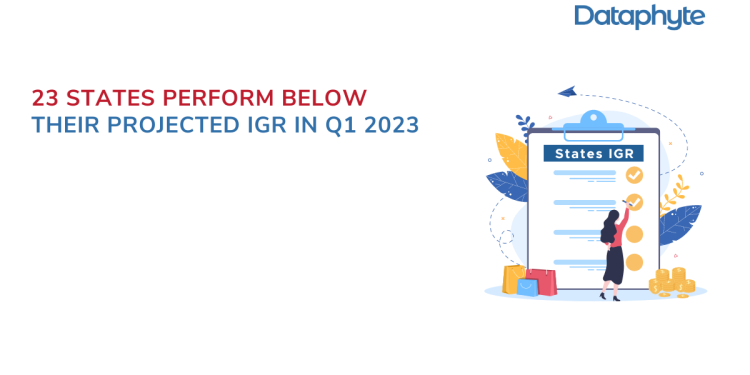Dataphyte’s review of Nigerian states’ first quarter budget implementation reports indicates that many states may fall below their projected revenue for the 2023 fiscal year based on their performance in Q1.
Every year, governments at the federal and state levels make a budget for the financial year. Beyond the expenditure part of the budget, a critical component is the revenue as well as the sources (where the revenue will come from).
For states in Nigeria, the revenue to fund their budgets usually come from the internal/independent revenue they generate, FAAC allocations from the federation account, aid and grants, and capital development fund.
This report shall focus majorly on the internally generated revenue (IGR) and how states performed in the first quarter of the year.
IGR are generated by states through the collection of Pay-As-You-Earn Tax (PAYE), Direct Assessment, Road Taxes, and revenues from Ministries, Departments and Agencies (MDAs).
As noted by Dataphyte in a previous report, IGR shows the fiscal wellness and economic viability of a state. It is the main source of funds for states to build infrastructure and execute developmental projects. It helps states to fund perennial financial obligations associated with governance, such as fixing bad roads, hospitals, and other infrastructural activities.
For the 2023 fiscal year, the 36 states in Nigeria projected to generate a total IGR of N2.64 trillion.
Lagos State has the highest projected internal revenue, followed by River State. Ogun, Delta, Kaduna, Imo, and Oyo projected to generate at least N83 billion internally.
.webp)
On the bottom of the chart are Kebbi, Yobe, Jigawa, Gombe, Ebonyi, and Taraba. These states’ projected IGR for the year is below N20 billion.
Recently, states published their Q1 budget performance reports. With four quarters in a year, it is presumed that states should have generated one-quarter (25%) of their projected revenue in each quarter. However, from the available data, a number of states fell short of that 25% revenue projection for the first quarter.
Some other states, however, hit over the 25% target.
For instance, as of the end of Q1 2023, data showed that Kwara State had generated 45.03% of its N41.04 billion IGR for the year. Delta State also generated over 40% of its projected IGR for 2023.
It is worth stating that the 42.64% IGR performance of Delta State was because revenues were collected from some IGR codes that were not budgeted in the first quarter of the year as explained in the state’s budget implementation report.
Kebbi, Ondo, Kogi, Ekiti, and Gombe generated at least 30% of their IGR at the end of Q1.
Jigawa, Bayelsa, Plateau, and Anambra achieved at least 27%.
Apart from these 11 states, every other state generated below 25% of their IGR at the end of the first quarter of the year.
.webp)
Akwa Ibom, Imo, Enugu, and Katsina generated below 15% of their projected internal revenue for the year as of the end of Q1.
For some of the states, their low IGR performance was attributed to security challenges and electioneering activities.
However, for Akwa Ibom State, which realised less than 2% of its projected N47.85 billion IGR for the year, it was disclosed in the budget implementation report that some MDAs, as of Q1, had not submitted its documentations.
On expenditure performance for Q1, Delta State had spent 33.6% of its budgeted expenditure for the year. Ekiti State, on the other hand, had spent one-quarter of its budget for 2023 in the same period.
Aside from these two states, at the end of Q1, every other state had spent less than 25% of its budget for the year,
.webp)
Plateau, Imo, Abia, Cross River, Enugu, Adamawa, Taraba, Benue, Nasarawa, Anambra, and Borno States spent less than 10% of their budget at the end of Q1 2023.
This wide-ranging low-budget performance in the first quarter suggests that some states may record a low-budget performance if the events remain the same in the other quarters of the year.
Wuyah Yunana et al, noted in their research that low IGR hinders the development of a state. While the research focused more on local governments, it bears implications for the respective states.
An economics lecturer at the Benue State University, Dr Princewill Okwoche, who commented on the Q1 internal revenue performance of the states, expressed concerns about low performance from many of the states, noting that lower revenues than expected would put the states in a difficult position when they try to fund their fiscal responsibilities.
He added situations like this also lead to budget deficits which push states to resort to borrowing to meet their obligations.



.webp)
.webp)
.webp)